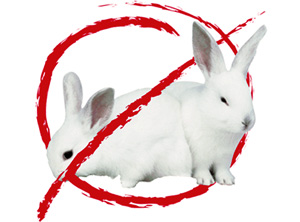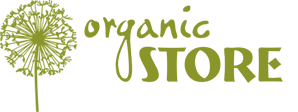 Before any cosmetic product goes on sale, its safety and hypoallergenic properties should be tested to ensure that it is not toxic and not dangerous to public health. Sadly, some manufacturers choose the path of least resistance and test their cosmetics on animals. Cosmetic testing on animals is considered cruel and has thus been banned in many countries. Animal rights conscious consumers choose cruelty-free cosmetics.
Before any cosmetic product goes on sale, its safety and hypoallergenic properties should be tested to ensure that it is not toxic and not dangerous to public health. Sadly, some manufacturers choose the path of least resistance and test their cosmetics on animals. Cosmetic testing on animals is considered cruel and has thus been banned in many countries. Animal rights conscious consumers choose cruelty-free cosmetics.
Cosmetic tests typically involve general toxicity, eye and skin irritancy, mutagenicity, and phototoxicity (toxicity triggered by UV rays). All cosmetic products must be tested to ensure they do not carry potential risk to consumers. There are two main approaches to testing. Some cosmetic manufacturers test on animals because animal research has been used for over a century, it is a well-established and relatively cheap method. Cruelty-free cosmetic brands do not test their products on animals and use alternative methods instead such as in vitro (cell culture techniques) and in silico (computer stimulation).
Using animal testing in the development of cosmetic products may involve testing either a finished product or its individual ingredients on rabbits, rats, mice and other animals. Animals used by laboratories for testing purposes are largely supplied by specialized dealers. However, suppliers of animals may also include breeders, dealers who supply animals from auctions, and animal shelters.
Most countries have trading standards and consumer protection laws which makes it impossible to sell products which have not been tested at all. But even this does not justify animal testing. Many tests used for testing cosmetics on animals are cruel. Take for example the Draize test. It is an acute toxicity test that involves applying test substance to the eye or skin of a restrained, conscious animal. The substance is then left for set amount of time before rinsing in out and recording its effects which might include redness, swelling, erythema, ulceration, haemorrhaging, or even blindness (in the eye test).
Another cruel acute toxicity test is the LD50 test. LD50 stands for “lethal dose, 50%”, or the median lethal dose. It is a measure of the lethal dose of a toxin. The value of LD50 for a substance is the dose required to kill half the animals used in a test. Although is was removed from the Organisation for Economic Co-operation and Development international guidelines in 2002, it still accounted for one-third of all animal toxicity tests worldwide in 2005.
In some cases, animal testing can be scientifically justified. Scientific research is guided by the Three Rs, three principles for more ethical use of animals in testing. They are replacement, reduction and refinement. These principles aim to improve animal welfare where the use of animals cannot be avoided. However, cosmetic testing is a different story because all cosmetic tests on animals can be replaced with cruelty-free alternatives. That’s why cosmetic animal testing is banned in the European Union, India, Israel, New Zealand, Turkey, and some other countries. Animal rights organizations campaign to end testing cosmetics on animals and regularly release the lists of cruelty-free brands to encourage consumers to buy their products.
Manufacturers that produce cruelty-free cosmetics use alternative test methods that avoid the use of live animals. Tho major alternatives to animal testing are cell culture techniques (in vitro) and computer simulation (in silico). Cell culture and tissue engineering are used in toxicity and irritation tests as well as to measure the rate of skin absorption. Computer simulation is used for in vitro to in vivo extrapolation.
How to distinguish cruelty-free cosmetics from products that have been testing on animals? First of all, animal rights organizations such as PETA release provide lists or even searchable databases of companies that don’t test their products on animals. So if you need to look up a particular company, you can use them. Secondly, cruelty-free products may have the Leaping Bunny symbol on them and/or words such as “Cruelty-free”, “Not tested on animals”, “Animal friendly”, etc.
Certified organic and certified vegan cosmetics are always cruelty-free. Organizations that provide organic certification for personal care products and cosmetics require that products and their ingredients be not tested on animals. For example, all ICEA certified cosmetics are cruelty-free. So if you see an ICEA sign on a product, you don’t have to look for the “cruelty-free” stamp.
In our online shop Organic Store, you can find a wide range of cruelty-free products. We offer certified organic and natural cosmetics produced by trustworthy manufacturers that do not test on animals. They include BabyBorn, Dr. Sante, Green Pharmacy, BIO Formula, BIO Nanny, Elfa Pharm, Fresh Juice, Home Doctor, O’Herbal, Sierra Bees, Cococare, Planeta Organica, Natura Siberica (ICEA certified), Crystal, e.l.f., Lafe’s, YAKA, Natural House, Savonry, Nubian Heritage, and more.
Organic Store chooses safe and natural products that have not been tested on animals: let’s say “No!” to cruel animal tests by choosing cruelty-free cosmetics.
